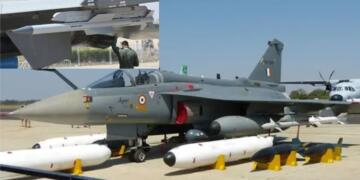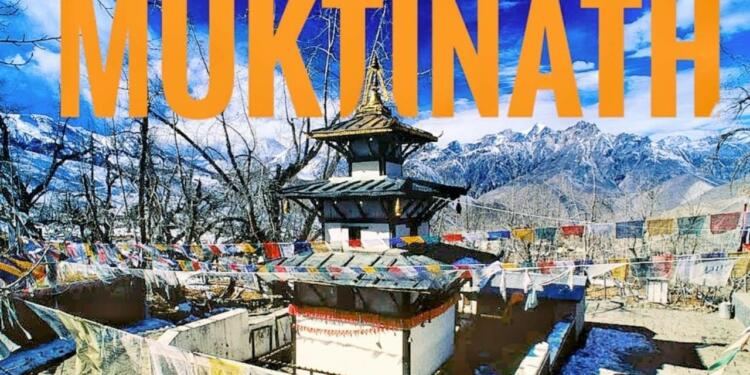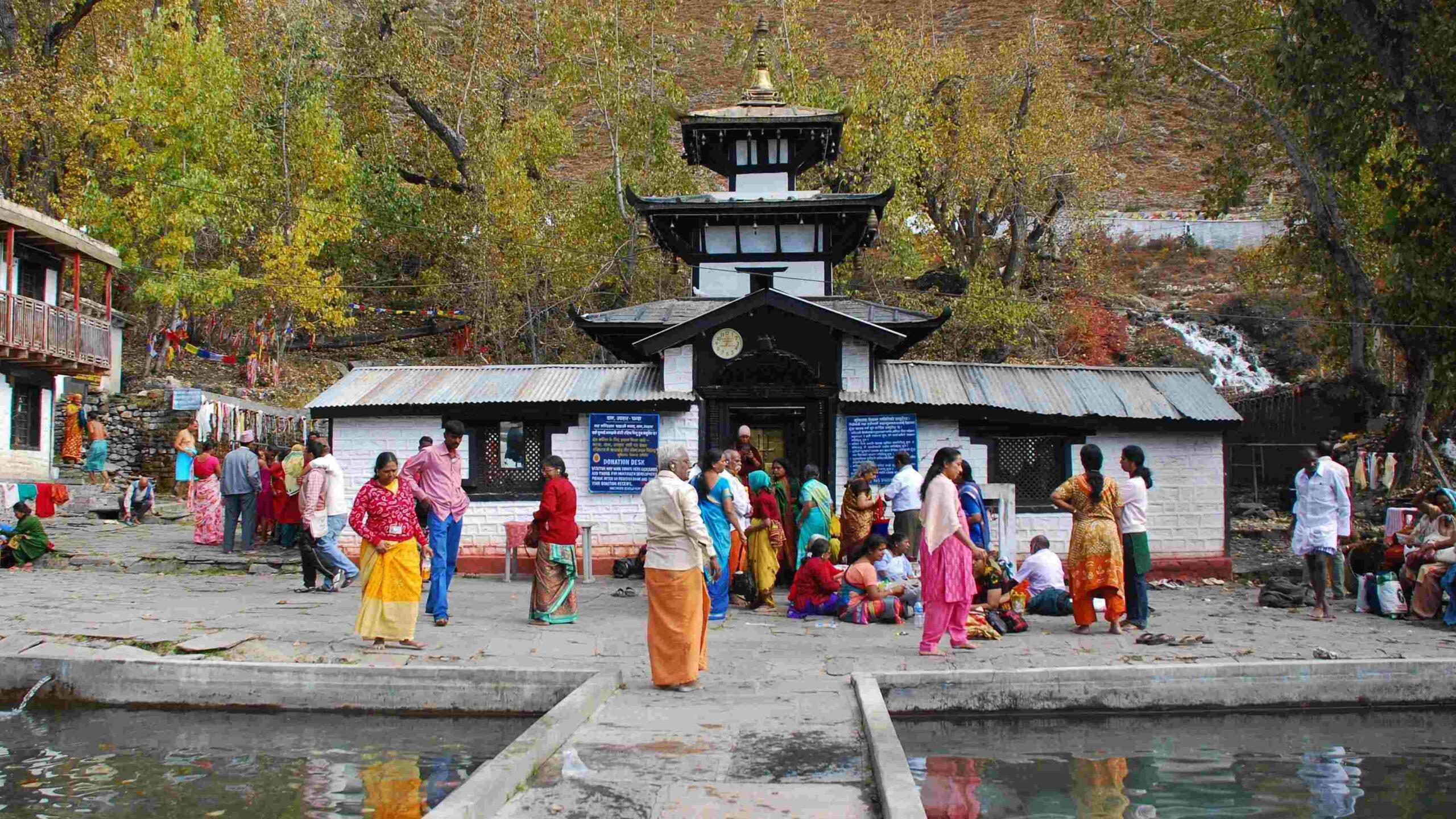Muktinath Temple, Nepal – Overview
Muktinath Temple, the 106th of the 108 Divya Desams, is situated at an altitude of 3,800 meters above sea level in the Mustang region of Nepal. It serves as a site of religious symbiosis for Hindus and Buddhists. Muktinath Dham is surrounded by snow-capped mountains.
The temple is considered an ideal ‘Mukti Sthan’ in Nepal. Buddhists call this place Chumig Gyatsa, which means hundred waters. It is one of the 24 Tantric sites. The idol of Muktinath is in one of the eight temples, namely Tirupati, Srimushnam, Pushkaram, Srirangam, Badrinath, Thothadri and Naimisharanyam. The divine Muktinath temple is believed to have appeared on its own.
History of this Temple
The history of the Muktinath temple finds various meanings in different sacred texts of the Buddhist and Hindu traditions. According to a belief, Lord Vishnu was transformed into Shaligram due to the curse of Brinda.
Lord Vishnu found his salvation in the place of Muktinath temple. This is the reason why Hindus worship Lord Vishnu, the presiding deity of the temple here. On the other hand, Buddhists consider Lord Vishnu as Avalokiteshvara (Buddha). Muktinath is a very old temple of Lord Vishnu.
At different times in the history of Muktinath, various sages such as Padmasambhava and Mahasiddhas blessed the places with their meditations, increasing the importance of the Muktinath temple.
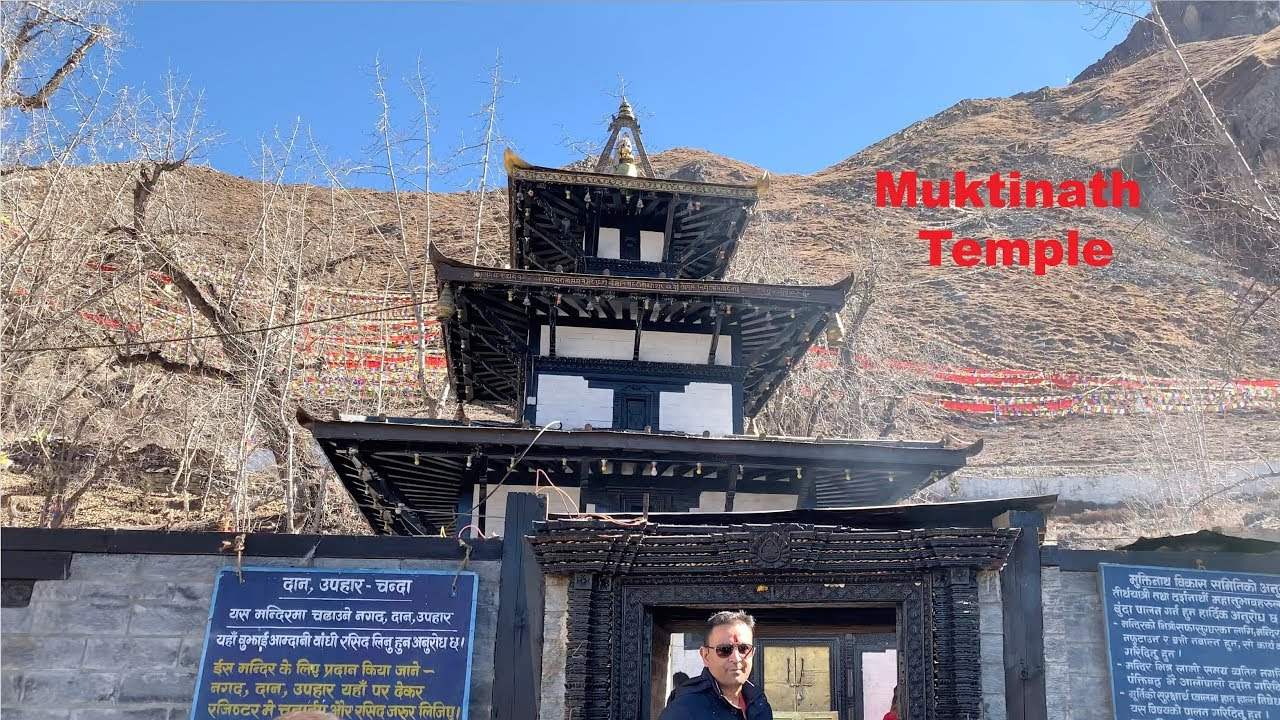
Tibetan Buddhist nuns are the customary gatekeepers of the temple and there is always a Buddhist monk present to perform the rituals. Tibetan Buddhists believe that the Muktinath temple place has twenty one Tara and the Lord of the temple and Lakshmi, Saraswati and other deities.
There are 108 streams in the backyard of the temple named Muktidhara where frozen water flows continuously from the bullhead and two kunds. According to common belief, one who takes a bath in the holy water can attain salvation.
Also Read: Mukthi Naga Temple, Timings, History, Travel Guide and How to reach
Best time to visit this Temple
The best time to visit Muktinath Temple is the months of March, April, May, June, September, October and November. The weather is very clear during these months and snow-capped mountains can be seen in the surrounding areas.
Muktinath Temple Timings
This Temple opens at 5am in the morning and closes at 8:30pm in the evening.
Also Read: Padmanabhaswamy Temple, Kerala: Timings, History, Travel Guide and How to reach
Place to visit near Muktinath Temple
Jwala Mai Temple
Mai temple falls on the south side of the main. The temple site has a spring and three eternal flames, two of which are still active. Pilgrims flock to the site to pay their respects to Jwala Mai, the flame goddess who makes her presence felt by burning as the eternal flame. Soil, rock and water are 3 different sources of 3 different flames respectively.
Muktidhara
The name Muktidhara is given to the 108 springs of water flowing from the unique bull’s mouth shaped tap, all arranged sequentially in a semi-circular pattern and each spout at a distance of one foot from each other.
This collective fountain of Muktidhara is also located in the back part of the temple. The water of the Gandaki river flows continuously from the taps and the pilgrims take a bath in this Muktidhara streams to free their mind and body from the ill effects of negative karma before entering the Muktinath temple.
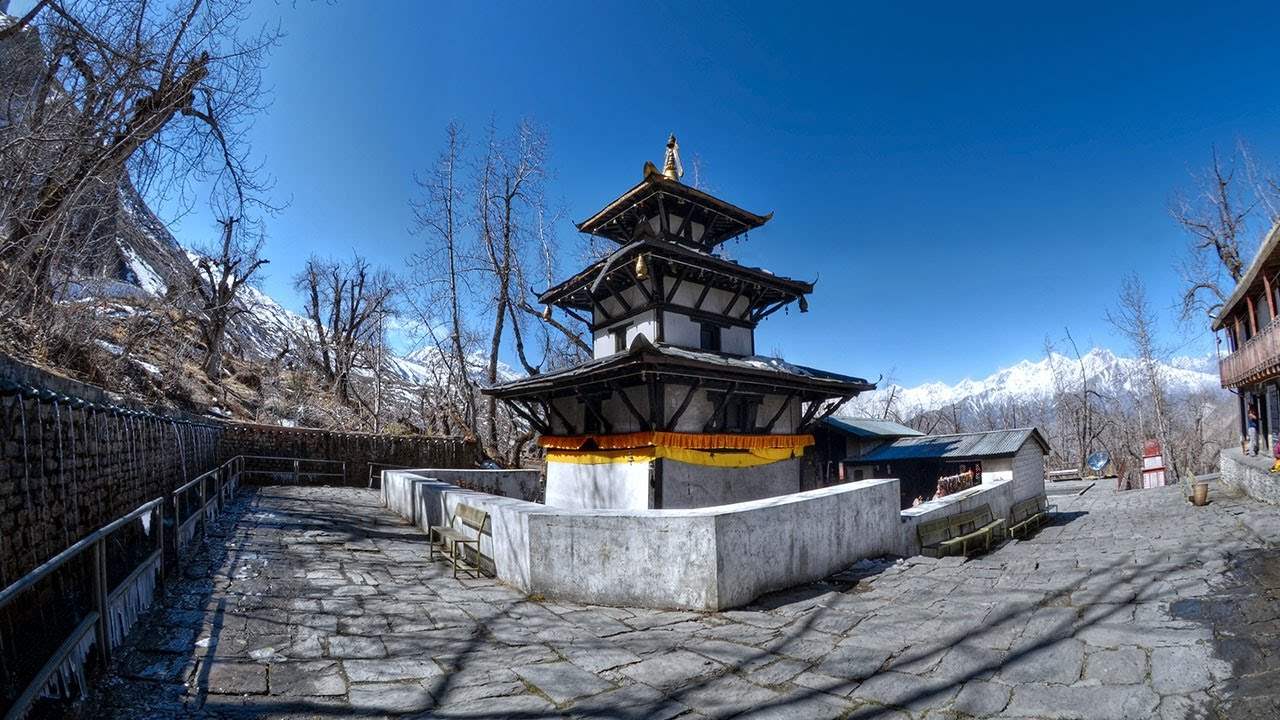
Also Read: Yadagirigutta Temple Timings, History, Travel Guide and How to reach
How to reach Muktinath Temple
By Air- There are mountain flights from Pokhara to Jomsom. And from there Jeeps are available from Jomsom to Muktinath.
By Road- Jeeps are available from Pokhara to Jomsom. There are jeeps from Jomsom to Muktinath. Traveling to Muktinath by road is an adventurous journey. This is due to the condition of the roads which are quite rough.
Subscribe our TFI Dharma YouTube channel to watch Devotional videos because we are here to serve Sanatana Dhrama: TFIDHARMA










